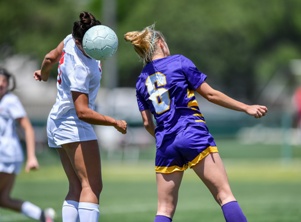Children Who Play Sports May Suffer Traumatic Brain Injuries
 School or local sports leagues offer many benefits to young athletes, including helping them build friendships, learn teamwork, and stay healthy and active. However, these activities may also cause serious injuries that can derail the futures of young players. Trauma to the head and neck in early life can cause long-term brain injury complications, including behavioral changes, cognitive impairment, delayed development and learning disabilities, or even early death.
School or local sports leagues offer many benefits to young athletes, including helping them build friendships, learn teamwork, and stay healthy and active. However, these activities may also cause serious injuries that can derail the futures of young players. Trauma to the head and neck in early life can cause long-term brain injury complications, including behavioral changes, cognitive impairment, delayed development and learning disabilities, or even early death.
Common Sporting Activities That May Result in Adolescent TBI
Sports and recreational activities contribute to about one-fifth of all traumatic brain injuries (TBI) in children and adolescents nationwide. Concussions are one of the most common injuries, with female athletes experiencing greater rates of concussions than males playing the same sport. Unfortunately, a player who has sustained a concussion is over three times more likely to experience another one, posing a danger of memory loss or brain damage as a result of repeated trauma. In some cases, head trauma may result in brain bleeds, skull fractures, or brain swelling—all of which may be fatal without immediate intervention.
Children and teenagers often suffer sports-related head injuries while playing:
- Football. Tackling and blocking during football games is a common cause of spinal cord injury, and may result in temporary or permanent paralysis. According to the Annual Survey of Catastrophic Football Injuries, 1.5 million high school and junior high school football suffered injuries that resulted in incomplete neurological recovery between 1977 and 2012—and injury rates were even higher at the college level.
- Baseball and softball. A 2017 review published in Frontiers in Neurology examined baseball- and softball-related traumatic brain injuries over three decades, discovering that serious brain injuries occurred once in about every 2,000 games. Although the study found that baseball and softball had overall lower rates of TBI when compared to other sports, most injuries were associated with lack of helmet use and returning to play too early after a concussion.
- Basketball. Parents who worry about bruises and broken bones as a result of children playing basketball may be surprised to learn that the sport boasts a higher-than-average rate of TBI. In 2010, the medical journal Pediatrics estimated that 4 million pediatric basketball-related injuries were treated in emergency departments from 1997 to 2007. Although the number of injuries decreased over the course of the study period, the number of basketball-related TBIs increased by 70 percent.
- Soccer. Heading the ball is a common maneuver in soccer, making protection from head injuries more complicated than in other sports. A player may make direct contact between his or her head and a speeding soccer ball several times in a game, all without the protection of a helmet.
- Cheerleading. Cheerleaders often suffer accidents while performing stunts to warm up a crowd, with as many as 20 percent of all injuries involving the head and neck. Even if high schools and colleges limit the types of cheerleading stunts that can be attempted, students can still suffer head injuries as a result of collisions with wood floors, hard ground, and each other.
- Boxing and martial arts. Amateur boxers are at an overwhelming risk of brain injury that causes permanent brain damage. Even if youngsters in these disciplines use foam padding and helmets for sparring, repeated blows to the head can result in varying degrees of damage, including speech difficulty, loss of balance or coordination, impaired impulse control, mood swings, or inappropriate behavior.
- Horseback riding. Head injuries make up less than 20 percent of all equestrian injuries, but they are the number one cause of hospital admission from horseback riding accidents. In a 2007 study by the Centers for Disease Control and Prevention, horseback riding accidents comprised nearly 12 percent of all traumatic brain injuries in recreational sports from 2001 to 2005, many of which resulted in subdural hematomas and brain hemorrhages.
If your child has suffered a sports-related brain injury in Tennessee, our attorneys can listen to the details of your case and advise you on your rights—and we do not collect anything from you until after your case is won. Simply fill out the short contact form on this page or request a free copy of our book, The 10 Worst Mistakes You Can Make With Your Tennessee Injury Case.
|
Related Links: |

